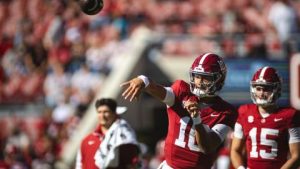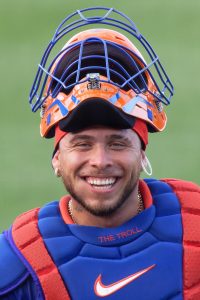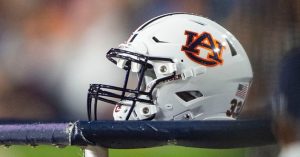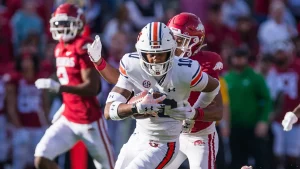As the Chicago Bulls continue to navigate the 2023-24 NBA season, the team finds itself in a pivotal year where roster decisions will shape the future. The Bulls are a team with talent, but inconsistency has plagued them for years. As they work to find success in the competitive Eastern Conference, head coach Billy Donovan faces the crucial task of figuring out which lineups will give the team the best chance to win. Some combinations of players have already shown promise, while others simply aren’t working.
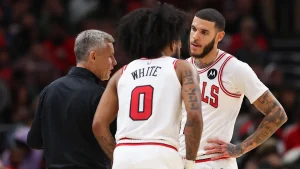
In this post, we’ll break down one lineup that needs expanded minutes and one that must be eliminated immediately, focusing on how the Bulls can maximize their potential and improve their overall team performance.
Lineup That Needs Expanded Minutes: The Zach LaVine, DeMar DeRozan, and Nikola Vucevic Trio with Patrick Williams and Ayo Dosunmu
There’s no question that Zach LaVine, DeMar DeRozan, and Nikola Vucevic form the core of the Chicago Bulls’ roster. Each of these players has proven to be capable of putting up impressive numbers, but it’s been unclear how they fit together cohesively as a unit. The answer might lie in expanding their minutes together while surrounding them with complementary pieces.
Why This Lineup Makes Sense
When these three stars—LaVine, DeRozan, and Vucevic—are on the floor together, they offer an offensive firepower that can break down almost any defense. LaVine’s athleticism and three-point shooting, DeRozan’s mid-range excellence and scoring ability, and Vucevic’s elite rebounding and floor-spacing make for a potentially devastating offensive trio.
However, the key to making this lineup truly effective isn’t just about offensive prowess; it’s about balance. Adding Patrick Williams and Ayo Dosunmu to the mix provides the right combination of defense and playmaking, which is essential to both complement the stars and address some of the team’s weaknesses.
- Patrick Williams: The young forward has shown flashes of both defensive versatility and scoring potential, although his consistency remains a work in progress. His size and athleticism make him an ideal wing defender who can guard multiple positions. While Williams isn’t known for being a high-volume scorer, his ability to space the floor with his three-point shooting (if he continues to develop this aspect of his game) and his defense gives the Bulls a much-needed two-way presence.
- Ayo Dosunmu: As a combo guard, Dosunmu brings energy, toughness, and a strong defensive mindset to the backcourt. He isn’t an elite scorer like LaVine or DeRozan, but his playmaking and decision-making have been solid. Dosunmu can run the offense when needed and, more importantly, provide reliable perimeter defense against opposing point guards. This allows LaVine and DeRozan to focus more on scoring and less on playmaking.
Together, these two role players provide a layer of stability that can help the Bulls’ big three operate at their best. While LaVine and DeRozan handle the majority of the scoring load, Vucevic can facilitate the offense as a high-post playmaker, and Williams and Dosunmu can do the dirty work defensively.
The Need for Expanded Minutes
The biggest reason this lineup should get more time on the floor is its potential to be a well-rounded unit, capable of both offensive explosions and locking down on defense. The Bulls have struggled with inconsistent defense, and this group could help shore up that issue.
Defensively, Williams and Dosunmu provide two key pieces that allow the stars to focus on their offensive games. Williams is a long, athletic forward who can match up with some of the toughest forwards and wings in the NBA, while Dosunmu’s ability to guard point guards and disrupt passing lanes is essential for team defense.
Offensively, the combination of LaVine’s explosiveness, DeRozan’s mid-range scoring, and Vucevic’s versatility as both a post player and a shooter provides a balanced offensive attack. The Bulls’ offensive struggles often stem from over-reliance on isolation plays from DeRozan and LaVine, but with this lineup, there is a clearer flow of the offense. Vucevic can act as a playmaker in the high post, giving the team more movement and helping to generate open shots.
This lineup also allows for improved spacing. With shooters like LaVine and DeRozan on the floor, Williams and Vucevic can help space the floor enough to allow lanes for drives and pick-and-roll action. While Williams has not yet become a consistent three-point shooter, his ability to stretch the floor—along with Vucevic’s shooting range—gives LaVine and DeRozan more room to operate.
The Ideal Balance
By giving this group more minutes together, Billy Donovan can test how they complement each other more effectively. The Bulls need to find ways to mesh their scoring ability with better team defense, and this lineup represents their best shot at doing that.
While the offense may still rely heavily on LaVine and DeRozan at times, Vucevic’s ability to pass and create plays makes this lineup dynamic, allowing the Bulls to mix up their offensive sets. The biggest concern with this group is Williams’ consistency, but his potential as a lockdown defender and his ability to grow as a shooter make him a necessary piece in the Bulls’ future success.
Lineup That Must Be Eliminated Immediately: The Javonte Green, Andre Drummond, and Patrick Williams Frontcourt
On the other side of the equation, there are lineups that simply don’t work. One combination that has often been ineffective is the frontcourt pairing of Javonte Green, Andre Drummond, and Patrick Williams. While this group might seem intriguing on paper—offering a mix of athleticism, rebounding, and length—on the court, it simply hasn’t translated into successful basketball.
Why This Lineup Doesn’t Work
- Javonte Green: Green is known for his hustle, athleticism, and perimeter defense, but his offensive game is limited. He’s not a reliable three-point shooter, and while he can contribute on fast breaks and cut to the rim, his lack of offensive polish makes him a tough fit next to two big men like Drummond and Williams.
- Andre Drummond: While Drummond is an elite rebounder and a physical presence in the paint, he doesn’t offer much outside of that. His inability to space the floor—especially alongside another non-shooter in Williams—clogs up the paint and limits offensive flow. Additionally, his lack of defensive versatility makes it hard for him to be effective when guarding stretch fours or switching onto guards in pick-and-roll situations.
- Patrick Williams: As previously mentioned, Williams is still a work in progress. While he has potential, his lack of consistency in his scoring and defense has been a liability at times. In this frontcourt lineup, Williams is often tasked with doing too much—whether it’s guarding multiple positions, scoring in isolation, or spacing the floor.
The issue with this lineup isn’t necessarily the individual talent but the lack of synergy between these players. Green doesn’t offer much spacing, Drummond clogs the paint, and Williams is still trying to find his offensive rhythm. This creates a situation where the Bulls are often outmuscled on the boards but unable to get easy offensive looks due to the lack of shooting.
Why It Must Be Eliminated
This lineup, in its current form, severely hampers both the offense and defense. Defensively, the Bulls are vulnerable in terms of perimeter shooting and defending pick-and-rolls, especially with Drummond on the floor. Offensively, the spacing is non-existent, and the team struggles to generate open shots. Drummond’s presence, while valuable for his rebounding and rim protection, limits the team’s ability to play the modern, positionless style of basketball that is necessary for success in today’s NBA.
Billy Donovan needs to reconsider how he uses Drummond and Green, as their minutes should be minimized when they are paired together on the court. Instead, giving more minutes to lineups that focus on ball movement, shooting, and spacing will be crucial for the Bulls to compete at a higher level.
Conclusion: Streamlining the Bulls’ Lineups
The Bulls have the pieces to be a competitive team, but they must find the right combinations to maximize their strengths and minimize their weaknesses. The lineup of LaVine, DeRozan, Vucevic, Williams, and Dosunmu offers the best balance of offense and defense and should be given more minutes. Conversely, the combination of Green, Drummond, and Williams simply isn’t effective and should be eliminated immediately from key rotations. By streamlining their lineup choices and focusing on cohesion, the Bulls can increase their chances of success and push for a higher playoff spot in the Eastern Conference.
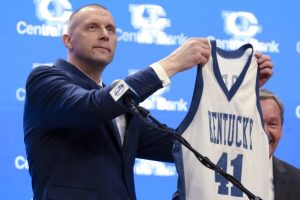
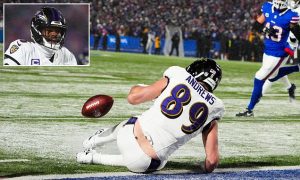
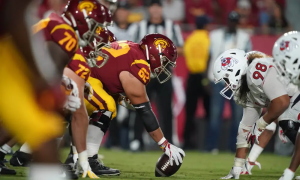
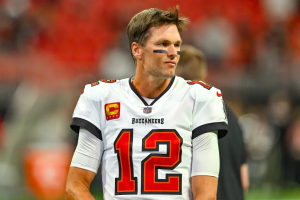
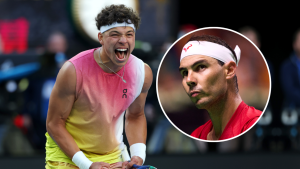 Ben Shelton: From College Star to Rising Tennis Sensation
Ben Shelton: From College Star to Rising Tennis Sensation